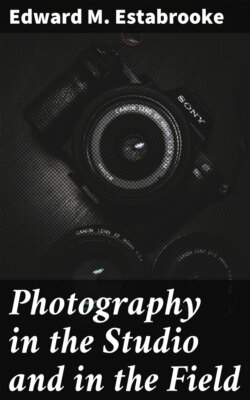Читать книгу Photography in the Studio and in the Field - Edward M. Estabrooke - Страница 10
На сайте Литреса книга снята с продажи.
COLLODION FOR POSITIVES.
ОглавлениеAs has before been stated, to produce the finest results in positive photography requires certain modifications of the collodion bath and developer, which, while not unfitting them altogether for negative work, yet would render them quite unsuitable for high class work.
The formula for positive collodion here given has many merits, and among those is a certain quality of film, which might be termed opacity, but not in the strict sense of the word; it is that quality in the film which enables it to cover up any small scratch or water mark on the surface of the plate that would infallibly spoil the picture, if almost any other collodion were used.
This quality, with great clearness or transparency in the shadows, and a beautiful gradation of light and shade, make it unique as a positive collodion.
There may seem to be a contradiction between the terms opacity and great transparency of shadows, which may need further explanation. As the shadows of a positive collodion picture are produced by the black surface of the plate showing through the collodion, any defect on that portion of the surface would be expected to show very plainly, and it does so with the use of the ordinary collodions sold by the dealers, but not so with the collodion under consideration, which may be because it is less permeable by the silver solution, and that consequently the deposit of iodide of silver lies more on the surface and less within the texture of the film, and is thus kept from contact with organic matter or other defects on the surface of the plate; in some such manner only, can I account for a very valuable quality that has saved thousands of p17 plates, that would under other usage have been thrown away.
This formula has never before been published, and must be prepared as directed.
Alcohol and ether equal parts; gun cotton sufficient to make a moderately thick film, say 5 or 6 grains to the oz.; put the cotton in the ether first; when it is well saturated, pour in the alcohol. To which add:
| Iodide of Ammonium | 4 grains to oz. |
| Iodide of Cadmium | 2 |
| Bromide of Cadmium | 1 |
| Bromide of Copper | 1 |
The latter ingredient can only be had in aqueous solution, I believe, and requires close calculation to get at the right quantity.
This formula gives 8 grains of salts to the ounce of collodion, and would require a silver solution of 50 grains to the fluid ounce to balance properly.
The silver solution may be prepared as per directions on page 29, under the heading—The Negative Bath.
